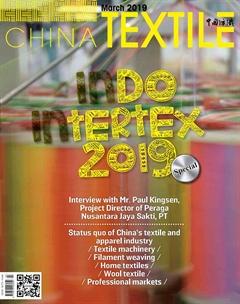Dear readers
March is very spectacular in seasonal expression as the Mother Nature brings whatever is dormient back to life in a refreshed cycle. This seasonal charm is not confined to the natural beauty alone, it has also an attentive spectacularity in Chinese political life as the “Big Two” conferences, publically known as National Peoples Congress (NPC) and Chinese Peoples Political Consultative Conference (CPPCC), are in session, capturing the headlines in the seasonal revival every year.
The Chinas Top legislature (NPC) and the Top Advisory Body (CPPCC) convene concurrently in March to review the government job done for the year just gone and approve whats to be done in the year to come. Against global trade headwind and economic turbulence, China, headstrong and determined, moved forward into another highland for its economic growth by 6.6 percent in the gross domestic product (GDP), a benchmark within its previously-set target range, to reach 90 trillion Yuan, about 12.238 trillion dollars according to Tradingeconomics updates.
The textile industry was also doing well in spite of mounting pressure in labor cost, bank loans, enforcements of environmental protection, off-shore relocations of new production capacities and the other factors of production, just to name a few. The total main profit was 276.614 billion Yuan out of its total business income for 5370.346 billion Yuan in 2018, up by 8.02% and 2.99% respectively, a significant fact that the profit grows faster than does the sales income.
With respect to the international trade, the textiles (yarns, fabrics and made-ups) were sold for $119.098 billion with yearon-year growth by 8.1 percent while the apparel was shipped out in value of $ 157.633 billion with an insignificant growth by 0.3 percent, signaling a continued upturn in textiles export to the countries where new investments in apparel manufacturing are on rise with growing appetite for yarns and fabrics to feed the crying demand out there. The apparel export staggered on an unsteady move forward, with merely 0.3% up-step in 2018, a situation that will most likely hover for quite some time in foreseeable future as a lot of big shots in Chinese apparel manufacturing industry outsourced their new productions in low-income countries in Southeast Asia and Africa, etc.. So far as I know, the overseas investment from our textile industry has registered for $9796 million in FDI sum up from 2003 to 2018, at annual growth rate of 15.6 percent, representing 5.6 percent of foreign direct investment (FDI) from Chinese manufacturing sector in dollar terms.
Sure enough, Chinese textile players would continue to invest in new operations off shore and over boarder to rationalize their production capacities in consideration of market proximity, policy incentives, cost competitiveness and supply chain rebuild in corporate strategy. But what counts most is the home-based textile manufacturing system that must be strengthened both physically and culturally in modern lineup of the technologically advanced machines, backed up by digital-driven modality of AI manufacturing and management, and by brands-valued concepts of supplying more than a physical product in meeting customer needs. In March, CCPIT-TEX organizes a series of textile and apparel trade fairs in Shanghai is very helpful in lining up our textile players under one roof for making deals for business, and for making our homestay manufacturing stronger to offset any impacts from the outgoing investment.
ZHAO Hong Editor-in-Chief
March, 2019
- China Textile的其它文章
- INDO INTERTEX 2019:Investment toward making Indonesia 4.0
- “Smart Dyeing & Finishing CHTC FONG’S Innovations”at INDO INTERTEX 2019
- TPET to mainly recommend four types of intelligent equipmentv
- Rifa Textile Machinery to exhibit four energy-saving and high efficiency products
- Brujas to promote series of high-quality card clothing
- Wuxi Hongyuan:Featured with a variety of intelligent products

